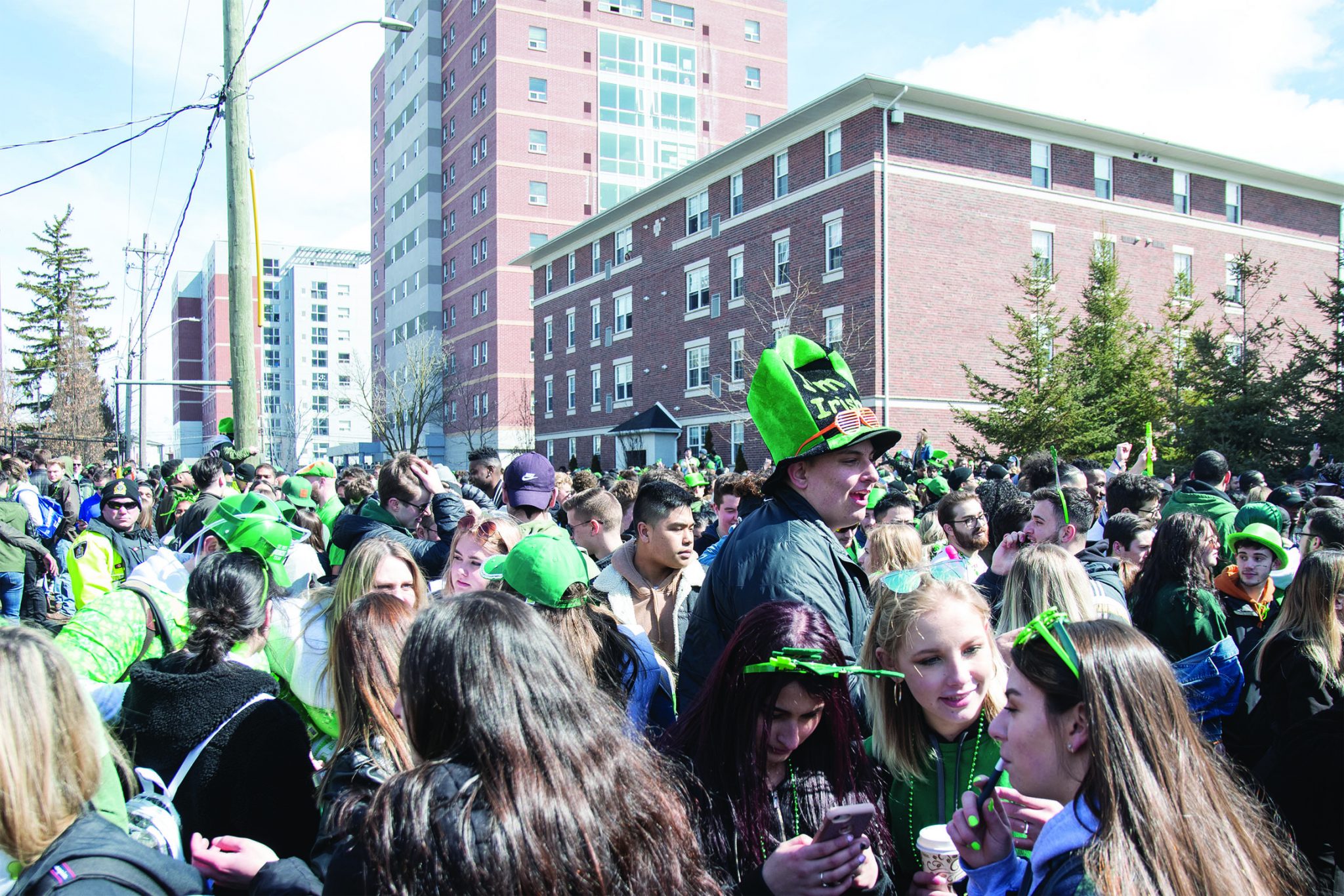EVA OU / CORD PHOTOGRAPHY
It’s hard to think of March without thinking of green decorations and clothing, shamrocks, and Irish beer.
But what do we really know about the reason we celebrate Saint Patrick’s Day?
Monica Van Ittersum is a second-year English student at Laurier Brantford who became familiar with the Saint Patrick’s Day story long ago, in an entertaining way.
“What I know of the origins of Saint Patrick’s Day is that it was first a day dedicated to Saint Patrick, who was the patron saint of Ireland,” she recalls. “I first learned of its origins from a small and quite entertaining cartoon on YouTube about Saint Patrick from silly songs with Larry.”
Ittersum is referencing, Veggie Tales, cartoon vegetables that can provide some useful and broad background information for viewers of all ages.
Doug Webber, a criminology graduate from Laurier, associates Saint Patrick’s memorable actions with this holiday.
“Saint Patrick drove the snakes out of Ireland,” he said, “historically and geographically there were never snakes in the British Isles, so most likely he drove the heretics out.”
Both individuals are absolutely right. Still, who really was Saint Patrick?
According to an article from The Holiday Spot, Saint Patrick was actually born in either Scotland or Roman England in the late 4th century AD. He only made it to Ireland when he was kidnapped by pirates as a boy and imprisoned there for six years.
After escaping his captors, Patrick travelled to Britain and then to France. Here, he joined a monastery and spent twelve years training and studying.
I first learned of its origins from a small and quite entertaining cartoon on YouTube about Saint Patrick from silly songs with Larry. —Monica Van Ittersum, second year English student
Once he became a bishop, Patrick felt compelled to return to Ireland and convert the Gaelic Irish, who were predominantly Pagans, to Christianity.
Saint Patrick is known for his considerable volume of converts through his active preaching, and for his diplomatic nature of giving gifts but refusing to receive any in return.
Saint Patrick died on March 17th, 461 AD, and left behind many well-known legends, such as using the shamrock to represent the Holy Trinity and driving all of the venomous snakes out of Ireland into the sea.
After 1500 years, it’s difficult to discern whether these statements are true or not.
Originally, Saint Patrick’s Day emerged as a Catholic holiday due to the saint’s religious works and career. It began as a feast day, and was characterized by formal gatherings like banquets and dances.
Today, this holiday has essentially evolved into a secular holiday that simply celebrates Irish people and culture.
The way individuals experience the holiday can change over time, too.
“When I was a child I spent it scouring the grass for a four-leafed clover, sadly I was never successful,” shares Van Ittersum.
“In the recent past I usually celebrated by doing some Saint Patrick’s Day baking and dressing in green,” she said.
Being a student at Laurier can enhance the Saint Patrick’s Day experience as well.
“When I was a Laurier student, I went to the Waterloo campus to celebrate on Ezra Avenue,” says Webber, “over 20,000 people each year makes it crazy.”
It’s true that Laurier’s Waterloo campus is known for their extravagant Saint Patrick’s Day celebrations, but what’s the story behind it?
According to an article in The Record, one out-of-control house party at the end of the school year in the early 1990s started everything. In the following years, on-campus events on the third Saturday in April were licensed and planned, and parties in student homes were common as well.
Celebration in April began to dwindle as students came to prefer Saint Patrick’s Day as a time to blow off steam; March doesn’t have many exams like April does. As well as, the earlier date doesn’t interfere with any summer commitments.
Celebrating the holiday at Ezra Avenue is now a much-anticipated experience for Laurier students on all campuses.
When asked about her favourite memory of the holiday, Van Ittersum reminisces on a cheesy experience.
“Making a Saint Patrick’s Day themed cheese and charcuterie board, and eating an incredible amount of Claddagh Bo and Guinness cheese—both Irish cheeses that you should really try.”




